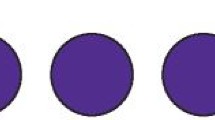Abstract
Aim This systematic review and meta-analysis of randomised controlled trials (RCTs) aimed to compare the efficacy of different caries removal techniques: complete caries removal (CCR), selective caries removal (SCR) and stepwise caries removal (SWR) for deep carious lesions in vital primary teeth.
Data sources The design of this review followed the PRISMA guidance (http://www.prisma-statement.org/). Relevant studies were identified using electronic databases (PubMed [Medline], Cochrane Library, EMBASE) and finally reference lists were screened. The US National Institutes of Health Trials Register (NIHTR; http://clinicaltrials.gov) and World Health Organisation International Clinical Trials Registry Platform (WHO ICTRP; http://apps.who.int/trialsearch) were used to help assess publication bias, as it was not possible to test funnel plot asymmetry. Duplicates were located and eliminated using EndNote X7 programme.
Study selection To be included, studies had to be published RCTs comparing SCR or SWR with CCR as caries removal strategies for deep carious lesions in vital primary teeth. The outcomes were pulp exposure, pulpo-periodontal complications (clinical and radiological failures) and/or restorative failures. RCTs applying these caries removal techniques were excluded if one of the other trial arms did not involve caries removal (that is, Hall Technique, therapeutic sealing of cavity lesions). Initially, 1,374 potentially eligible articles were identified, out of which 15 (English or French language only) were selected for full-text screening, which included ten relevant references corresponding to eight studies.
Data extraction and synthesis Two authors independently extracted data using a piloted data extraction sheet, with a third reviewer resolving any disagreements. The authors performed conventional intention-to-treat and per-protocol meta-analyses, and calculated odds ratios (ORs) as effect estimates in the random-effects model, using Revman5.
Results The eight included RCTs were conducted between 1977 and 2018. They include 669 patients and 824 teeth, with follow-up ranging from four weeks to 24 months. Collective results showed reduced risk of pulp exposure after SCR (OR: 0.10, 95% CI [0.04, 0.25]) or SWR (OR: 0.20, 95% CI [0.09, 0.44]), compared with CCR. There was a higher risk of composite restorative failure (OR: 2.61, 95% CI [1.05, 6.49]) using United States Public Health Service (USPHS) criteria, after SCR was compared with CCR only in intention-to-treat analysis. However, when comparing the risk of clinical or radiographic failure of pulpo-periodontal complications, no difference was found between SCR, CCR or SWR.
Conclusion The conclusions of the paper are that there is a significant decrease in pulp exposure risk with SCR and SWR in comparison with CCR. However, there is a need for further studies with less risk of bias powered to report on the long-term outcomes of pulpo-periodontal health and restoration longevity.
This is a preview of subscription content, access via your institution
Access options
Subscribe to this journal
Receive 4 print issues and online access
$259.00 per year
only $64.75 per issue
Buy this article
- Purchase on Springer Link
- Instant access to full article PDF
Prices may be subject to local taxes which are calculated during checkout
Similar content being viewed by others
References
Li T, Zhai X, Song F, Zhu H. Selective versus non-selective removal for dental caries: a systematic review and meta-analysis. Acta Odontol Scand 2018; 76: 135-140.
Pedrotti D, Cavalheiro C P, Casagrande L et al. Does selective carious tissue removal of soft dentin increase the restorative failure risk in primary teeth? Systematic review and meta-analysis. J Am Dent Assoc 2019; 150: 582-590.
Health & Social Care Information Centre. Children's Dental Health Survey. 2013. Available at https://files.digital.nhs.uk/publicationimport/pub17xxx/pub17137/cdhs2013-england-report.pdf (accessed April 2020).
Coll J A, Seale N S, Vargas K, Marghalani A A, Al Shamali S, Graham L. Primary Tooth Vital Pulp Therapy: A Systematic Review and Meta-analysis. Pediatr Dent 2017; 39: 16-123.
Franzon R, Opdam N J, Guimarães L F et al. Randomized controlled clinical trial of the 24-months survival of composite resin restorations after one-step incomplete and complete excavation on primary teeth. J Dent 2015; 43: 1235-1241.
Chadwick B L, Evans D J. Restoration of class II cavities in primary molar teeth with conventional and resin modified glass ionomer cements: a systematic review of the literature. Eur Arch Paediatr Dent 2007; 8: 14-21.
Kupietzky A, Atia Joachim D, Tal E, Moskovitz M. Long-term clinical performance of heat-cured high-viscosity glass ionomer class II restorations versus resin-based composites in primary molars: a randomized comparison trial. Eur Arch Paediatr Dent 2019; 20: 451-456.
Santamaría R M, Innes N P T, Machiulskiene V, Schmoeckel J, Alkilzy M, Splieth C H. Alternative Caries Management Options for Primary Molars: 2.5-Year Outcomes of a Randomised Clinical Trial. Caries Res 2018; 51: 605-614.
Scottish Dental Clinical Effectiveness Programme. Prevention and Management of Dental Caries in Children. 2018. Available at https://www.sdcep.org.uk/published-guidance/caries-in-children/ (accessed April 2020).
Author information
Authors and Affiliations
Rights and permissions
About this article
Cite this article
Hamouda, M., Deery, C. What is the best caries removal strategy for primary molars?. Evid Based Dent 22, 20–21 (2021). https://doi.org/10.1038/s41432-021-0150-x
Published:
Issue Date:
DOI: https://doi.org/10.1038/s41432-021-0150-x



